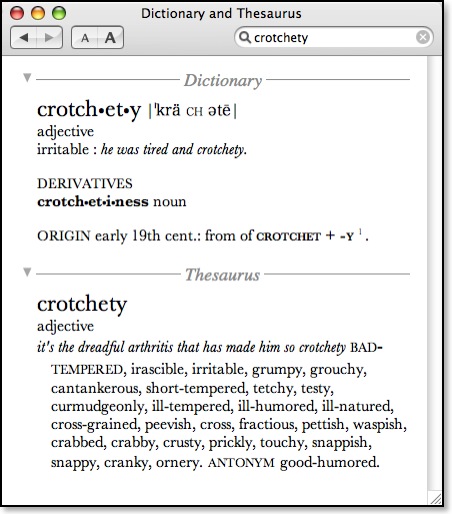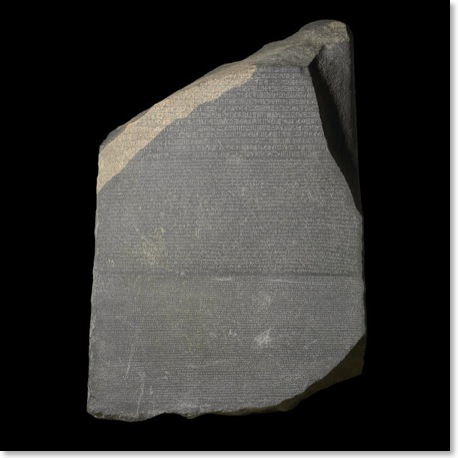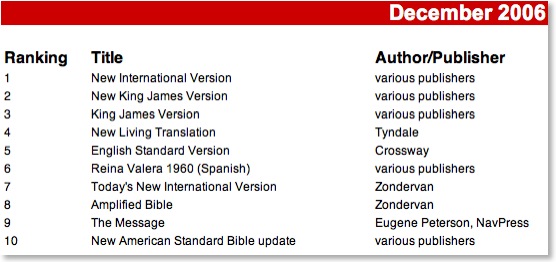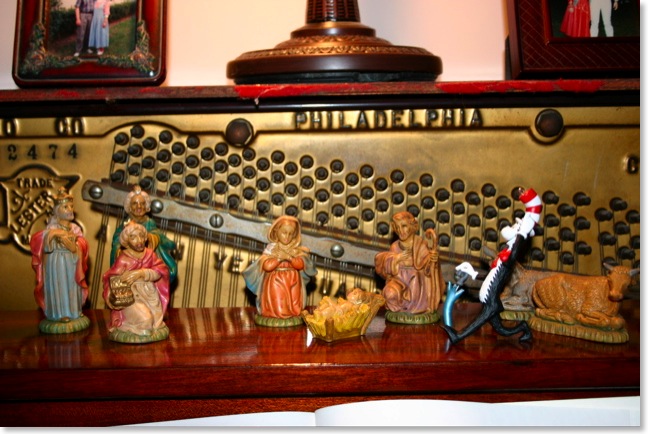Pennington 70th Anniversary

On December 23, 1936, two teenagers, Dale Pennington and Queenie Amis got married.
That was seventy years ago. Seventy years is a long time. When they got married, they couldn’t call their friends on their cell phones to share the news. They couldn’t fly to some exotic honeymoon spot because there were no commercial flights in that day. Their announcement couldn’t be made on the evening news because there was no television. The wedding could not be blogged because not only was there not an internet, there were no personal computers or computers period. Heck, there weren’t even pocket calculators in those days. Cars did not have cruise control, automatic transmissions, and certainly not GPS satellite location. There were no space shuttles, no moon landing, not even a chimpanzee had been shot into space. My grandmother didn’t have a microwave oven to cook their first meal in, but she did have a cast iron skillet.
When Dale and Queenie got married, it was in the midst of the Great Depression, so they didn’t have a lot. But they did have tremendous love for each other. That love saw them through good times and bad times, military service, good jobs and bad jobs. Their love literally gave birth to three children and numerous grandchildren and great grandchildren.
Seventy years of marriage is a milestone and testimony to Dale and Queenie’s faith in God and love for one another. You are an inspiration to me and all those assembled here today. We celebrate your seventy years, and as you walk hand-in-hand into the sunset of your days, we pray that they will continued to be filled with the happiness and love that has marked your lives together.
To Dale and Queenie Pennington, Happy 70th Anniversary!
Stop Blaming the Innkeeper--the TNIV Gets It Right Again
“and she gave birth to her firstborn, a son.
She wrapped him in cloths and placed him in a manger,
because there was no guest room available for them.”
(Luke 2:7 TNIV)
I can still hear Jim Blevins, one of my old NT profs from way back, lamenting the fact that the Bethlehem innkeeper has gotten a bad rap all these years for supposedly being so heartless toward Mary and Joseph--making them stay in the barn rather than finding a room at the local Motel 6! The Bethlehem innkeeper has been the villain in Christmas pageants down through the centuries--but it was all based on poor translation!
Kατάλυμα/kataluma is better understood as a family guest room rather than an inn (and the first century inn wasn't anything like we think of as an inn anyway, but that's another subject). More than likely because Joseph, as well as many of his extended family, was traveling back to his ancestral village, the extra rooms in his relatives' homes were full. He and Mary may have also arrived late because no doubt traveling during the ninth month of pregnancy would have slowed their journey. One might wonder why one of Joseph's relatives would not have given up his spot in the guest room, especially considering Mary's condition. However, one can speculate that Mary may have been shunned by Joseph's family members who would have probably heard that she was pregnant out of wedlock.
Craig S. Keener notes in the IVP Bible Background Commentary: New Testament (p. 194),
The word traditionally translated "inn" probably means "home" or "guest room"; with all Joseph's scattered family members returning home at once, it is easier for Mary to bear (or care for the child after birth) in the vacant cave outside.
But maybe it wasn't a cave. Ben Witherington III notes in the "Birth of Jesus" entry of the Dictionary of Jesus and the Gospels the following:
A second crucial point is how one translates kataluma in Luke 2:7. The word can mean guest room, house or inn. It can be doubted whether there would have been an inn in Bethlehem in Jesus’ day since it was not on any major road, and inns normally were to be found only on major roads, especially the Roman ones (but cf. Jer 41:17, which does not refer to a place in Bethlehem). Furthermore, when Luke wants to speak of a commercial inn he uses pandocheion; 10:34 refers to an establishment found on the major road between Jerusalem and Jericho. Also, when Luke uses the word kataluma in his Gospel (22:11 and par.; cf. 1 Kings 1:18), it clearly does not mean an inn but a guest room. It is also worth pointing out that the Arabic and Syriac versions of the NT have never translated kataluma as inn.
It becomes more likely that by kataluma Luke means either house or guest room, and the latter translation must have the edge precisely because in the vast majority of ancient Near-Eastern peasant homes for which we have archaeological and literary evidence, the manger was within the home, not in some separate barn. The animals as well as the family slept within one large enclosed space that was divided so that usually the animals would be on a lower level, and the family would sleep on a raised dais (Bailey). In this particular case, we should probably envision Mary and Joseph staying in the home of relatives or friends, a home which was crowded due to the census being taken, a home where Luke tells us there was no longer any room in “ the guest room” (noting the definite article before the noun). Consequently, Mary gave birth to her child perhaps in the family room and placed the baby in the stone manger. This means that a good deal of the popular conception of this scene has no basis in the text. In particular, the idea of Mary and Joseph being cast out from civilized accommodations and taking up temporary residence in a barn is probably based on a misunderstanding of the text.
Regardless, Luke 2:7 stands as another testimony to the accuracy of the TNIV for translating κατάλυμα correctly in contrast to the mistranslation in almost every other major Bible version (the NLTse gets it right by using the word lodging which could imply either meaning). I'm glad the translators finally caught up with what dear old Dr. Blevins had been saying for decades. And now we can finally give that poor old innkeeper the break he deserves.
Free Christmas Story Podcast from the Bible Experience
Clicking on the image below (reproduced from Zondervan's website) will automatically launch iTunes. You do have iTunes loaded onto your computer don't you?
If you would prefer not to use iTunes, you can download an mp3 file, and you can also click here to see the "Making of" video.
Quote for the Day #10: Peaceful Living
There are three sights which warm my heart
and are beautiful in the eyes of the Lord and of men:
concord among brothers,
amity among neighbours,
and a man and wife who are inseparable.
(Ecclesiasticus 25:1, REB)
[ἐν τρισὶν ὡραΐσθην καὶ ἀνέστην ὡραία ἔναντι κυρίου καὶ ἀνθρώπων ὁμόνοια ἀδελφῶν καὶ φιλία τῶν πλησίον καὶ γυνὴ καὶ ἀνὴρ ἑαυτοῖς συμπεριφερόμενοι]
Coming Soon: The George Costanza/Passion Experience
There's not a whole lot that's new here if you keep up with these things. Some folks--publishers and readers alike--still seem surprised at how well the Bible sells:
The familiar observation that the Bible is the best-selling book of all time obscures a more startling fact: the Bible is the best-selling book of the year, every year. Calculating how many Bibles are sold in the United States is a virtually impossible task, but a conservative estimate is that in 2005 Americans purchased some twenty-five million Bibles—twice as many as the most recent Harry Potter book. The amount spent annually on Bibles has been put at more than half a billion dollars.
In some ways, this should not be surprising. According to the Barna Group, an evangelical polling firm, forty-seven per cent of Americans read the Bible every week. But other research has found that ninety-one per cent of American households own at least one Bible—the average household owns four—which means that Bible publishers manage to sell twenty-five million copies a year of a book that almost everybody already has.
The article primarily focuses on all the many niche Bibles that are out there for everyone from skaters to surfers and describes the history of modern Bible publishers. I'm not opposed to targeting the Word of God toward niche markets, but I hope that carriers of these specialty Bibles eventually get around to reading the Scriptures themselves. I realize that I'm not the market for these Bibles, since overall I prefer a plain text (with wide-margins, of course), and I usually keep a study Bible close by for quick reference before I hit the commentaries and other reference books. I also wonder sometimes if such specialty Bibles don't over-individualized readers or specific groups of readers. To me what is definitely over the line is the “The Personal Promise Bible [which] is custom-printed with the owner’s name ('The LORD is Daniel’s shepherd'), home town ('Woe to you, Brooklyn! Woe to you, New York!'), and spouse’s name ('Gina’s two breasts are like two fawns')." Yikes.

Okay, he probably didn't say "blazes," but that's how I like to remember him. He was the kind of grumpy old prof you expect to say something like that. I looked behind me and saw a display with multiple copies of the Experiencing God Study Bible which our company had required us to place prominently behind the counter even though our customers were probably not target audience for such.
I explained to him that this was essentially a copy of the NKJV with notes from Henry Blackaby, the writer of Experiencing God, interspersed throughout the text. The OT professor wrinkled his brow, harumphed, and declared, "Well, I remember a day when the Bible itself was all you needed to get by." I smiled politely and didn't say what I wanted to--namely that "If that were true, you and I would both be out of a job." I also didn't point out the irony in the fact that he required the Oxford Annotated Study Bible in his OT Intro classes.

Interesting. No name was mentioned for this new project. Therefore I propose The George Costanza/Passion Experience.
iWeb Revisited

Currently I use RapidWeaver, which overall I like, but I wish I could combine the best of RapidWeaver and the best of iWeb into one program. For instance, the creators of RapidWeaver have been promising a table generator for RW for the longest time, but it's never happened. Currently, if I want to create a table, I have to create it in DreamWeaver and paste the html code into RW. However, because iWeb uses the same objects created in Pages or Keynote, I could create a better-looking table in one of those apps and paste the object itself into iWeb.
Although I like iWeb--or at least the promise its features seem to give--my complaints against it are significant. I update my blog more than any part of my website, and at iWeb's release there was no ability to natively add comments or trackbacks. There's still no trackbacks, but in an interim release earlier this year, comments were added and I actually like their implementation better than the Haloscan comments I use on this site. Another big problem I had with iWeb was that it didn't allow for html snippits. So there's no way to add sitemeter, a blogrolling.com list, a YouTube video or even any of the occasional Amazon Associate ads that I place on here. Actually, there are a few third-party utilities that help with this, but they are all hacks in one way or another. And generally I don't like to add hacks to software or my OS because invariably if the original company updates the software, the hack is incompatible and causes problems.
iWeb also doesn't allow the creator to change templates which I find to be mind boggling. Even Blogger allows for a different template for any whim of a reason. The templates that come with iWeb are very creative, but none are exactly what I want. Of course, I haven't found a perfect template here in RapidWeaver, either. The current one I am using is a compromise.
However, with the coming year, hope springs eternal that iWeb will be updated to addresxxxxxxxxxxxs some of its shortcomings. iWeb isn't popular enough to get a lot of attention in the rumor mills, but Think Secret posted some info a few weeks back that seems to indicate that iWeb 2.0 will add a lot of the features that should be there already. If everything that has been rumored is true, I may very well switch to using iWeb instead of RapidWeaver for my site. That doesn't mean that I would every take down these pages because some of my posts have various links to them from elsewhere. But I would gradually recreate as much as I could of the blog and completely move over the other pages to iWeb.
In the meantime, I'm going to create a very scaled down "This Lamp iWeb Mirror Page" as a kind of experiment and so that I can become more familiar with the program. For every post I add here, I will also create a copy there and perhaps a couple of previous posts as well. My hope is that iWeb 2.0 will allow me to change templates because I really don't like the one I'm using in iWeb, but it will work best with my blog. If iWeb 2.0 doesn't serve my needs and I don't switch, I won't have put too much effort into my little experiment.
Link: This Lamp iWeb Blog Mirror
What Kind of Reader Are You?
| What Kind of Reader Are You? Your Result: Obsessive-Compulsive Bookworm You're probably in the final stages of a Ph.D. or otherwise finding a way to make your living out of reading. You are one of the literati. Other people's grammatical mistakes make you insane. | |
| Dedicated Reader | |
| Book Snob | |
| Literate Good Citizen | |
| Fad Reader | |
| Non-Reader | |
| What Kind of Reader Are You? Create Your Own Quiz | |
Chillingly accurate?
HT: Paul Roberts
Just to Spoil It All for Us
The Science of Santa Claus
No known species of reindeer can fly. BUT there are 300,000 species of living organisms yet to be classified, and while most of these are insects and germs, this does not COMPLETELY rule out flying reindeer which only Santa has ever seen.
Santa has 31 hours of Christmas to work with, thanks to the different time zones and the rotation of the earth, assuming he travels east to west (which seems logical). This works out to 822.6 visits per second. This is to say that for each Christian household with good children he has 1/1000th of a second to park, hop out of the sleigh, jump down the chimney, fill the stockings, distribute the remaining presents under the tree, eat whatever snacks have been left, get back up the chimney, get back into the sleigh, and move on to the next house. Assuming that each of these 91.8 million stops are evenly distributed around the Earth (which, of course, we know to be false but for the purposes of our calculations we will accept), we are now talking about .78 miles per household, a total trip of 75½ million miles, not counting stops to do what most of us must do at least once every 31 hours, plus feeding and etc.
The payload on the sleigh adds another interesting element. Assuming that each child gets nothing more than a medium-sized Lego set (2 pounds), the sleigh is carrying 321,300 tons, not counting Santa, who is invariably described as overweight. On land, conventional reindeer can pull no more than 300 pounds. Even granting that "flying reindeer" (see point #1) could pull TEN times their normal amount, we cannot do the job with eight, or even nine. We need 214,200 reindeer. This increases the payload — not even counting the weight of the sleigh—to 353,430 tons. Again, for comparison—this is four times the weight of the Queen Elizabeth.
This analysis can be traced back as far as 1990, and has been attributed to a lot of different people. It's found all over the web, with many different "original" authors claiming it as their own. It awaits the writing of a better conclusion, however, since we all know that Santa Claus is not only very much alive, but does, in fact, accomplish everything set out above.
Jeshua or Joshua?
What makes this interesting is that most mainstream translations (KJV, NASB, NIV, REB, ESV, NRSV, HCSB, NLT etc.) render the name Jeshua instead of Joshua, and the Hebrew (יֵשׁ֡וּעַ) confirms this traditional rendering.
Then Jeshua son of Jozadak and his fellow priests and Zerubbabel son of Shealtiel and his associates began to build the altar of the God of Israel to sacrifice burnt offerings on it, in accordance with what is written in the Law of Moses the man of God. (Ezra 3:2 NIV)
Then Joshua son of Jozadak and his fellow priests and Zerubbabel son of Shealtiel and his associates began to build the altar of the God of Israel to sacrifice burnt offerings on it, in accordance with what is written in the Law of Moses the man of God. (Ezra 3:2 TNIV)
After a little digging on this priest with whom I was not overly familiar, I discovered that he is referred to elsewhere the Bible, specifically in Hag 1:1, 12; Zech 3:1-10; 6:11. And guess what? In each of these places, the same person is referred to as Joshua (יְהוֹשֻׁ֧עַ). How do we know it's the same person? Well, Jeshua/Joshua is almost always mentioned in connection with his father, Jehozadak the high priest. The real question might be why this person is referred to as Jeshua in Ezra and Nehemiah?
I did not come across any explanation in my reading as to why the name appears in the Hebrew differently, but I would welcome any insight. In the meantime, I could guess that Jeshua was probably simply a shortened form of Joshua, which is technically Yehoshua. Perhaps this is something similar to my name, Richard, being shortened by most who speak to me as simply Rick. But would the average English reader know that Jeshua is related to Joshua any more than someone from Japan might know that Rick is related to Richard?
The TNIV uses the more standard name Joshua and in doing so helps the reader form easier connections to other references to this person in the Old Testament. Is this a valid rendering for a translation committee to make? I believe so because it helps bridge the cultural and language gap between the Hebrew and English and communicates the meaning of the biblical text quite clearly. If that still bothers you--if you feel that the TNIV does not accurately translate the text in Ezra regarding the name of the priest, Jeshua/Joshua--keep in mind that if we really want to get picky, our translations would have to read Yeshua in Ezra and Yehoshua in the Haggai and Zechariah. The names in our English Bibles have been Anglicized--and quite a bit at that.
One more thing... although I have not done a wide survey of translations regarding the rendering of the name in Ezra, I found two other translations that streamline the name simply into Joshua: the Good News Translation and the Contemporary English Version.
And one final thing: the Anchor Bible Dictionary has a very good (but understandably brief) article on this priest who returned to Jerusalem from Babylon... but be sure to look him up under Jeshua.
Minister Switches from ESV to TNIV
In his recent blog entry, "Why I Use the TNIV," Wallace describes his journey to using the new translation after using the NIV as a teenager and the ESV through most of seminary.
His basic reasons for using the TNIV boil down to accuracy and readability. Wallace notes that the TNIV translates Greek words such as ἀδελφοί / adelphoi as "brothers and sisters" when the context warrants it rather than simply "brothers" as more traditional translations are apt to do (to its credit, the ESV usually notes "brothers and sisters" as an alternative translation in the footnotes).
Regarding readability, Wallace finds this issue to be particular important to his target ministry group: junior and senior high school students. Wallace notes that "they’re not stupid by any means - but I need to be using a translation that uses langauge they can understand." As an example, he discusses Luke 15:17 from the parable of the Prodigal Son:
ESV: But when he came to himself, he said, "How many of my father’s hired servants have more than enough bread, but I perish here with hunger!"
TNIV: When he came to his senses, he said, "How many of my father’s hired servants have food to spare, and here I am starving to death!"
Brian Wallace, who has studied both Greek and Hebrew says that not only is the TNIV his main translation for use with students, but also the main translation he uses himself.
Zondervan's NIV Archaeological Study Bible Revisited: New Printing Corrects Some Errors, But Leaves Others
In fact, because of my enthusiasm for the ASB, my wife and I purchased one for my brother-in-law last week as a Christmas present. While taking a copy off the shelf in the store, I immediately noticed that the dust jacket was the same height as the entire volume. Remembering that the dust jacket on my copy had been more of a wrap-around cover, I wondered if corrections had been made to the copy I held in my hand. I quickly turned to p. 101 to see if the Rosetta Stone was turned right-side up. It was! However, something still did not look right. More about this below.
The new printing (recognized by a full-length dust jacket in the hardback) should not be mistaken for a new edition of the ASB. Bibliographies for further research are still missing, and a few things have been changed, but unfortunately other things have not. The list below should not be considered a complete one, but rather my checks on the issues discussed in the comments of my previous review. It should be noted that Zondervan was made aware of the issues in my last post of the ASB and the comments pertaining to it.
- The front matter now includes a list of article contributors which was missing from the original edition. Articles are still not signed, but at least the contributors, many of which were graduate students are now given credit. However, I can no longer find their names or even the names of the editors on the ASB website., although the link included in the comments of my previous review still works. If I am overlooking a link still on the ASB site, someone can correct me.
- The spelling inconsistency of "mikveh" (p. 1648) and "miqveh" (p. 2085) remains. Neither one is incorrect, but usually in a work like this a consistent spelling will be adopted. Obviously, this is a minor issue, but I'm surprised it has not been caught.
- William Hallo's name is still misspelled as "Hallow" on p. xviii (p. xix in the original edition). I double-checked my own copy of The Context of Scripture yet again, and the name is indeed misspelled. This should have been a prioritized correction.
- The Masoretic Text in the glossary listing on p. 2085 is still listed as being housed at the Saint Petersburg Public Library, but this title is slightly incorrect. Technically the manuscript is housed in the Russian National Library (or the State Public Saltykov-Shchedrin Library), which technically is a public library in Saint Petersburg, Russia.
- Something I hadn't noticed before, and is probably picky to some, but Dr. Duane Garrett (who served as General Editor and Theological Review) is associated with the "Southern Baptist Seminary" on p. xviii instead of the "Southern Baptist Theological Seminary," the actual name of the school.
- Now about that Rosetta Stone on p. 101--good news and bad news. The good news, which I have already mentioned, is that the Rosetta Stone in the new printing is now right-side up:

In the photo above, I have laid the first printing on the left next to the recent printing on the right. In the original edition of the ASB, the Rosetta Stone was incorrectly placed upside down. The new printing places it right side up. But when I first looked at the "corrected" image while still in the store, something bothered me; something didn't seem right. When I got home I looked up the Rosetta Stone in a few of my own resources. Sure enough--it's still not correct. The picture in the book is actually a mirror image of the original Rosetta Stone. Compare, for instance, this image from the website of the British Museum where the stone is kept:

Obviously, the original blunder was worse, but one would think that an artifact as well-known as the Rosetta Stone could be displayed correctly.
In spite of these issues, I'm still very enthusiastic about the Archaeological Study Bible. I own one myself, and I just bought one as a Christmas present. However, before the next printing of this Bible, hopefully someone can really give it a fine-tooth proofread. This should probably be an expert in the field of biblical archaeology and backgrounds who did not work on the original project. It's often quite hard to proofread one's own mistakes because one knows how the work is supposed to read (happens here on my blog all the time).
One more thing... before posting this blog entry, I contacted Zondervan almost a week and a half ago to see if there was a complete list of corrections and changes available for this new printing of the ASB. Unfortunately, I have not heard from them yet, but if I find out there are more corrections, I will post them here.
And You Thought the Kneeling Santa Nativity Was A Bit Much?
Momentum Growing for TNIV

For those keeping track of translations released since the beginning of the new millennium, two points are with noting. First, the Holman Christian Standard Bible (HCSB), another translation recommended by this blog, has completely dropped out of the top ten list for the first time since it entered the rankings in 2004. Second, strictly for sake of comparison, the English Standard Version (ESV), now ranked #5, took about three and a half years to crack the top ten compared with less than two years for the TNIV. It may also be worth noting that the New American Standard Bible (NASB) now has one of the lowest rankings I can remember seeing.
The CBA rankings, while significant, do not paint the entire picture of Bibles sold. They do not include non-member stores, including large retail chains and Amazon.com. The CBA rankings are probably best described as Bibles that a large number of evangelicals purchase in actual stores.
Congratulations to Zondervan, the International Bible Society and the TNIV Committee on Bible Translation for the new ranking that demonstrates the growing acceptance of this very accurate and readable translation.











